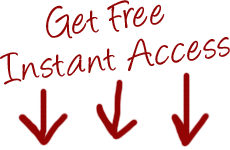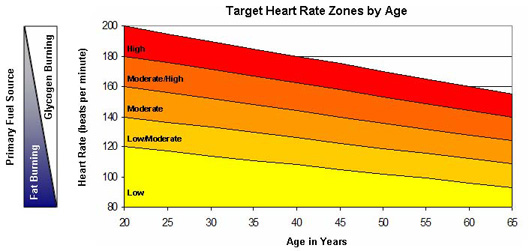Weight Loss: Lose Belly Fat Fast
Understand Your Target Heart Rate and Perceive Exertion to Burn Fat
Do you know how to maximize your weight loss and lose belly fat during your cardio routines?
Many people want to achieve weight loss by burning fat. In order to burn fat, you have to have a solid nutrition plan combined with a solid workout plan that includes cardiovascular exercise. Without aerobic training and a consistent approach to your diet, you will not be able to lose belly fat and flatten your stomach.
Weight loss, particularly around the belly can be extremely difficult. By adding cardio training to you exercise plan, you can burn extra calories during the day, which allows for extra weight loss.
The intensity at which you engage in cardio training can have a significant impact on where those extra calories come from, and, as a result, where that weight loss comes from. Obviously, we prefer to that weight loss come primarily from fat.
The heart rate zones below, which measure how hard you are working, will help you to understand at what percentage of your maximum heart rate you should to train for weight loss primarily from fat. This will make your efforts to lose belly fat much more effective.
One thing to remember as you learn and evaluate the various zones, is that as the number of calories burned from glycogen (carbohydrates) increases, your bodys ability to maintain and build muscle decreases. That is the challenge for those of us who want to maintain (or even increase) muscle while dropping that last layer of fat for a shredded set of 6-pack abs.
Before we look at the heart rate zones, we first need to estimate our maximum heart rate (MHR).
"To People Who Want To Burn Fat - But Can't Get Started"
FREE:Want to increase your fat burning?
Grab your complimentary subscription to Middle Management™ and get Ben's FatBurners 101™ videos now...
Module 1: Create a Concrete Plan with the 4 M's
Module 2: 4 Super Simple Ways to Stay Motivated
Module 3: Little Used Secret Burn More Fat 24-Hours Per Day
Module 4: 7 Easy Steps to Melting Fat Permanently
The subscription is FREE and only available through this offer.
Join below and receive your first lesson immediately without any delay.

To estimate your maximum heart rate, simply subtract your age from 220.
Example: If you are 30 years old, then your maximum hear rate (MHR) is
MHR = 220 30 = 190 beats per minute (bpm)
Each of the zones below will give you a target percentage of you MHR.
Low Heart Rate
This is the easiest zone to achieve. It is less than 60% of your MHR.
In general, people who use walking for their aerobic training are most likely in this heart rate zone.
This zone primarily used for warming up and cooling down, though beginners should train in this zone until they build some endurance and aerobic fitness. Advanced trainers may use this zone for the recovery periods between higher intensity segments in their interval training.
This zone can help burn fat, decrease blood pressure, and lower cholesterol.
Obviously, this zone burns fewer calories than its higher intensity counter parts; however, those calories primarily come from fat, which is good for those looking for weight loss and those looking to lose belly fat fast.
The primary energy source for this heart rate zone is fat.
Specifically, 85% of the calories come from fat.
This is not too bad for overall weight loss and efforts to lose belly fat.
Total Calories Burned: Low
Calories Burned from Fat: High (85%)
Low/Moderate Heart Rate
Your target heart rate for this zone is 60% to 70% of your maximum heart rate.
Training at a higher intensity means that you burn more calories than the low heart rate zone described above.
The beauty of the low/moderate zone, especially for those looking lose belly fat as their primary weight loss goal, is that 85% of your total calories burned still come from fat!
For this reason, people sometimes refer to this zone as the fat burning zone.
The percentage of fat calories burned is identical to the low heart rate zone above: 85% of the calories come from fat.
Again, this is great for both those who are looking for overall weight loss, and those looking to lose belly fat.
Total Calories Burned: Low/Moderate
Calories Burned from Fat (%): High (85%)
Moderate Heart Rate
Your target heart rate for the moderate zone is 70% to 80% of your maximum heart rate.
The aerobic zone improves your cardiovascular and respiratory health. When training for an endurance event, this is the zone where you should focus your training.
Training in this zone allows increases the size and strength of you heart. As a result, your heart pumps more blood per beat, and your resting heart rate decreases.
Again, the total number of calories burned increases. However, the percent of those calories that come from fat reduces to 50%.
Total Calories Burned: Moderate
Calories Burned from Fat (%): Moderate (50%)
Which Zone Should I Train in to Lose Belly Fat?
These percentages can be slightly misleading. Lets say that you are exercising at a low heart rate intensity, and burning 150 calories per hour. If 85% of those calories come from fat, then you will burn 127.5 calories from fat.
Now, lets say you kick up the intensity into the moderate zone and your calories burned per hour increases to 325. In this zone, 50% of you calories burned come from fat. That is 162.5 calories from fat!
For those looking to build or maintain muscle, the trick is finding the balance between burning glycogen (carbohydrates) and fat during cardio training. We know that glycogen is important for maintaining and building muscle. More glycogen burned during your cardio session means fewer carbohydrates are available for to repair and build muscle. That is why you never see marathoners with huge muscles!
Therefore, you should keep in mind the calories from carbohydrates that are burned during the workout, especially if you goal is only to lose belly fat. You will want to maintain as much muscle as possible during this weight loss process.
Another consideration is total amount of time exercised. Again, take the example above. If you can only exercise for 15 minutes at the moderate intensity, you will burn 40.25 calories from fat.However, if you can go 30 minutes at the low level, then you would burn 63.75 calories from fat.
So, if you have more time, and do not want to train at a higher intensity, then you can train in the low and low/moderate zones and achieve not only weight loss, but you will lose belly fat in the process.
If an overall reduction in total body weight is your main goal, the source of the calories burned will be of less concern for you; however, it is still a good thing to keep in the back your mind as you work out.
One final consideration when considering the either the moderate zone above, or the even higher heart rate zone below is the potential for injury or overtraining. Is should be obvious that the risk of injuring your self or overtraining is reduced with intensity.
The Endurance (or Cardio) Zones
The next two zones are primarily for those specifically undertaking endurance type training. However, when doing interval training to achieve overall weight loss or to lose belly fat, you may periodically enter these zones.
Moderate/High Heart Rate
This zone is between 80% and 90% of your maximum heart rate. As you can imagine, the calories burned in this zone are higher than the other zones we have discussed so far.
This is will further allow you to increase your endurance and the maximum amount of oxygen consumed during exercise (also called VO2 max).
You may want to utilize this zone during you interval workouts. By increasing your heart rate temporarily, you can maintain a higher heart rate during the recovery portion of your interval, allowing for increased fat burning throughout the workout.
The calories burned in this zone come primarily from glycogen (carbs). Fat makes up less than 15% or calories burned.
While using this interval burns a large amount of calories (promoting overall weight loss) relative to the other zones, it may not be ideal for those wishing to lose belly fat while maintaining muscle.
Total Calories Burned: Moderate/High
Calories Burned from Fat (%): Low (15%)
High Heart Rate
The final zone is the high heart rate zone. It is between 90% and 100% of your maximum heart rate. Only the super fit should use this zone should only be used for a limited period.
This zone is primarily used by fit people in their weight loss efforts and efforts to lose belly fat during interval training. This is for the same reason described in the anaerobic heart rate section above. By increasing your heart rate temporarily, you can maintain a higher heart rate during the recovery portion of your interval, allowing for increased fat burning throughout the workout.
Long periods in either of the cardio zones will inhibit your bodys ability to maintain and build muscle due to the severely depleted glycogen stores.
The graph below shows your heart rate zones by age, as well as the proportion of calories burned from fat and glygogen at each target heart rate.

What if I Cannot Measure My Heart Rate During Exercise?
As you can tell, knowing your heart rate can be a great tool to help you lose belly fat.
The easiest way to measure your heart rate during exercise is by using a heart rate monitor.
However, if you do not have access to a heart rate monitor, there is a very easy trick you can use to estimate heart rate zones during exercise to make sure you are training in the best zones to lose belly fat.
Perceived Exertion (PE)
Perceived Exertion, or PE, is a measure of how intensely you feel that you are working out. A person experiences several physical sensations during a workout. One of these experiences is an increase in heart rate.
Gunnar Borg created the original scale in the 1950s, and it ranges from 0 to 20. However, for ease of use, we will reduce the scale to range from 1 to 10. Most of the cardio based free workout plans found on this site that help you not only lose belly fat, but also fat all over your body use this scale.
We adapt the scale from 1 to 10 because we can use it to estimate at what percent of maximum heart rate you are performing and tie it back to a heart rate zone above. For example, if you are performing at a 5 on the modified perceive exertion scale, you are exercising at approximately 50% of your maximum heart rate and are in the low zone.
Of course, this is only a loose approximation, and your actual heart rate can vary quite a bit depending on age and fitness level.
The chart below shows these approximations and is not a substitution to accurately monitoring your heart rate. Use them as a guide only, and consult a physician before beginning any exercise program.
| Modified Perceived Exertion Scale | |||
| Level | Description | Heart Rate Zone | |
| Level 1 | No Actvity | 0% to 10% of MHR | |
| Level 2 | Light Activity | 10% to 20% of MHR | |
| Level 3 | 20% to 30% of MHR | ||
| Level 4 | 30% to 40% of MHR | ||
| Level 5 | Moderate Activity | Low | 40% to 50% of MHR |
| Level 6 | 50% to 60% of MHR | ||
| Level 7 | Hard Activity | Low/Moderate | 60% to 70% of MHR |
| Level 8 | Very Hard Activity | Moderate | 70% to 80% of MHR |
| Level 9 | Extrememly Hard Activity | Moderate/High | 80% to 90% of MHR |
| Level 10 | Maximum Activity | High | 90% to 100% of MHR |
Leave "Weight Loss: Lose Belly Fat" and Return Home











